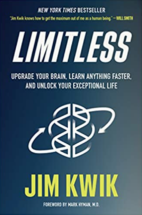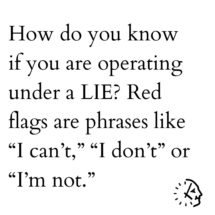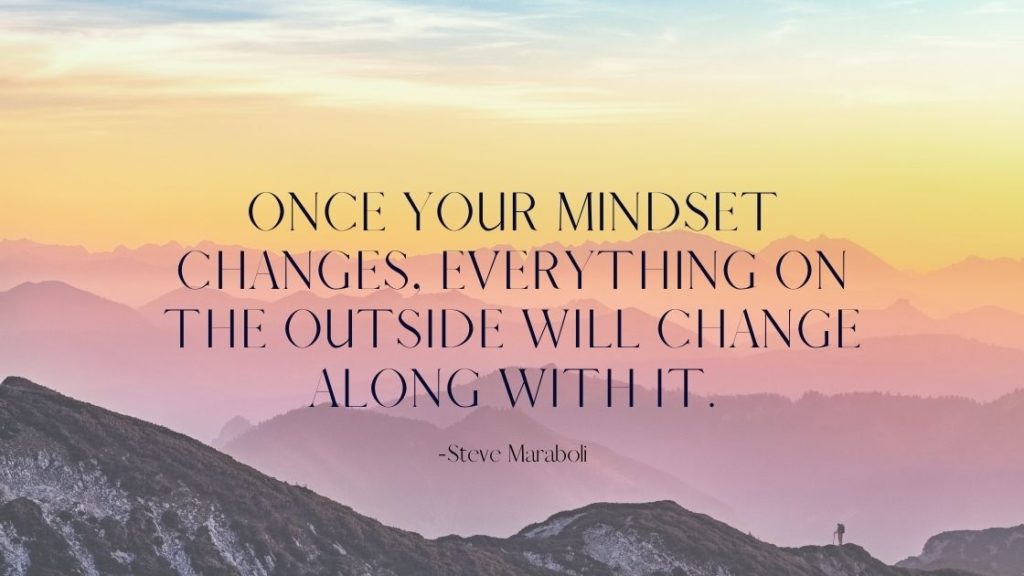The other day, I realized that I’ve been writing about executive functions for over ten years! What amazes me is that I keep coming up with new topics. For inspiration, I look to my clients, challenges with my own brain, conference speakers (remember them?) and books.
In the early days of the pandemic, such a book unexpectedly arrived. Opening the package, I read the title: Limitless: Upgrade Your Brain, Learn Anything Faster, and Unlock Your Exceptional Life, by Jim Kwik. Of course, I had completely forgotten preordering it. With the high-stress environment at the time, I quickly forgot about the book again until months later when I packed for my “failed vacation.” I stuffed it, along with a composition book for notes, into my bag.
I have been intently reading the book ever since! It has been thought-provoking, and applicable to my personal life and the lives of my clients. I suspect that the book could source many future blogs but for this one, I want to share Kwik’s insights about mindset and how to change it.
Entire books have been written on mindset, most famously by Carol Dweck, so I will give you the briefest definition I found from my computer search: “Mindset – the established set of attitudes held by someone.”
 In his book, Kwik points out that we often operate out of a mindset that can be very limiting, very negative in fact. He further states that many of these limiting attitudes are really beliefs. When identified and analyzed, these beliefs are revealed not as “truths” but actually “limiting ideas expressed,” which Kwik distills down to the memorable acronym: LIEs. How do you know if you are operating under a LIE? Red flags are phrases like “I can’t,” “I don’t” or “I’m not.”
In his book, Kwik points out that we often operate out of a mindset that can be very limiting, very negative in fact. He further states that many of these limiting attitudes are really beliefs. When identified and analyzed, these beliefs are revealed not as “truths” but actually “limiting ideas expressed,” which Kwik distills down to the memorable acronym: LIEs. How do you know if you are operating under a LIE? Red flags are phrases like “I can’t,” “I don’t” or “I’m not.”
Many of my clients who struggle with executive functioning use those negative phrases all the time, and initially resist adopting strategies to make their lives work better. Here is a classic example: the student who refuses to write down homework assignments (sound familiar?). Here’s a summary of Kwik’s 3 Keys to changing a behavior mindset, viewed through the lens of this example.
Step 1: Name Your Limiting Beliefs.
First, you must notice the LIE to name it. My student (let’s call her Judy) was checking into our sessions repeatedly noting that her continuing problem was not writing in her Set Up Success planner. At this point, she was noticing the behavior and beginning to see how it was causing her problems. That was a big step in the right direction.
Next, I shared Kwik’s ideas about “Limiting Ideas Expressed” and asked what was the LIE she was telling herself about writing down assignments.
With a bit of coaching she came up with, “I don’t have to write anything down because it is all online.”
OK. What is the LIE (belief) underneath that?
“I don’t have to write it down because I will be able to remember it.”
How is that working?
“Not so good.”
What is the LIE you are telling yourself underneath that belief?
“I don’t write things down because it takes too long.”
Ah…Bingo!
I paused to address Kwik’s point that once identified, you need to determine how you came up those beliefs (attitudes or “facts”) in the first place. Beliefs typically come from three areas of our lives: our family, our culture and our experiences.
 In Judy’s case, her first LIE, (no need to write down assignments because they are online), comes from our culture. Technology, especially for the digital natives, is supposed to make everything simple (not always the case). And yet, her experience is showing her that she can’t seem to remember all of her assignments, so that is poking a hole in that particular belief. The more we looked into the truth of these specific beliefs, we discovered that they are not facts, they are actually opinions. There is a good chance that opinions can be wrong. Once we collect more information, our opinions can change. That is what we did with Judy’s final LIE: writing things down takes a lot of time.
In Judy’s case, her first LIE, (no need to write down assignments because they are online), comes from our culture. Technology, especially for the digital natives, is supposed to make everything simple (not always the case). And yet, her experience is showing her that she can’t seem to remember all of her assignments, so that is poking a hole in that particular belief. The more we looked into the truth of these specific beliefs, we discovered that they are not facts, they are actually opinions. There is a good chance that opinions can be wrong. Once we collect more information, our opinions can change. That is what we did with Judy’s final LIE: writing things down takes a lot of time.
Step #2: Get to the Facts.
In Judy’s case, this was pretty easy to do. She was already familiar with the concept of collecting data about the time tasks require from our work in the Seeing My Time course. She agreed to be a “time scientist” and figure out how long it really takes her to write down assignments from her online school portal.
Step #3: Create a New Belief.
The next time we met, Judy reported that she had been writing assignments down in her planner! She then added that she hadn’t done it every day.
First, I celebrated with her that she had indeed written down assignments and that it hadn’t been that time consuming, pretty easy really. Yay!!! (Remember, positive celebration helps to solidify new habits.)
Then we discussed how important it is to NOT focus on the times she didn’t do it. If she focused on that, then she was reinforcing negative self-talk and supporting her LIE. I assured her that I didn’t expect her to remember to write things down every day, especially while starting a new behavior. Instead, I simply asked her to notice the difference between the days that she writes down assignments and the days she doesn’t. Judy readily agreed that when she wrote things down, she had an easier day. Now is the point where she has created space to carve out a new belief, an actual truth: “I can write down assignments to have a good day.”
My LIE, Exposed!
I have found it pretty awesome to examine my own LIEs. One of my LIEs was: I can’t remember names. Well, Kwik encourages us to USE our great brain, to work it a bit. As a result, I now have a way to remember names!
As I go on my morning jogs, I stop to introduce myself to neighbors I haven’t met. We chat a bit as I tell them where I live. Then I tell them that I am playing a game with myself to remember names and ask if they want to play with me. So far, everyone has!
We learn each other’s names, and practice saying them to each other while we have the conversation. We end our conversations, by once again saying our names back to the other like this: “Well, Ryan, it was very nice talking with you”. And then Ryan says, “Nice meeting you, Marydee.” I review all the neighbor’s names as I jog around, even if I don’t see them. And you know what? I have not forgotten them!!! It is amazing. I CAN remember names.
What personal LIE can you turn into a truth? Try Kwik’s three-step approach. You might amaze yourself.
Little by little…
Marydee

